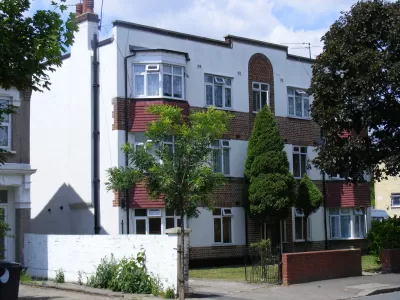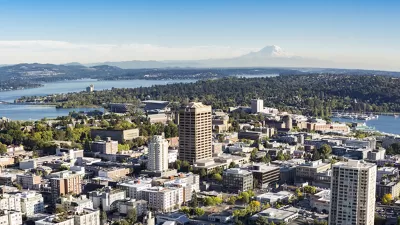Federal funds meant to help renters during the pandemic are still stuck in bureaucratic limbo as the end of the latest eviction moratorium looms in early October.

Although Congress allocated $46 billion in rental assistance in the last two COVID-19 stimulus packages, writes Annie Nova, "just around $4.2 billion of that money has reached households, according to a new analysis by the National Low Income Housing Coalition."
Distribution has varied widely in different states: "Texas has already managed to distribute more than half of its first round of federal rental assistance, while South Carolina has given out less than 2%." Throughout the U.S., "programs are understaffed and overwhelmed by the volume of applications. Insufficient outreach and arduous documentation requirements have also been barriers. A recent study by the Urban Institute found that fewer than half of renters even know about the federal assistance." The process can also be prohibitively complicated. "Andrew Aurand, vice president for research at the housing coalition, said he ran into one application that was 45 pages long. Another required renters to document their income over the last six months."
Recently, renters got a short reprieve with an extended eviction moratorium that ends on October 3, but housing advocates say getting rental assistance to those who urgently need it is the only way to prevent a future wave of evictions and displacement.
FULL STORY: This map shows how much rental assistance states have distributed

Maui's Vacation Rental Debate Turns Ugly
Verbal attacks, misinformation campaigns and fistfights plague a high-stakes debate to convert thousands of vacation rentals into long-term housing.

Planetizen Federal Action Tracker
A weekly monitor of how Trump’s orders and actions are impacting planners and planning in America.

In Urban Planning, AI Prompting Could be the New Design Thinking
Creativity has long been key to great urban design. What if we see AI as our new creative partner?

How Trump's HUD Budget Proposal Would Harm Homelessness Response
Experts say the change to the HUD budget would make it more difficult to identify people who are homeless and connect them with services, and to prevent homelessness.

The Vast Potential of the Right-of-Way
One writer argues that the space between two building faces is the most important element of the built environment.

Florida Seniors Face Rising Homelessness Risk
High housing costs are pushing more seniors, many of them on a fixed income, into homelessness.
Urban Design for Planners 1: Software Tools
This six-course series explores essential urban design concepts using open source software and equips planners with the tools they need to participate fully in the urban design process.
Planning for Universal Design
Learn the tools for implementing Universal Design in planning regulations.
Gallatin County Department of Planning & Community Development
Heyer Gruel & Associates PA
JM Goldson LLC
City of Camden Redevelopment Agency
City of Astoria
Transportation Research & Education Center (TREC) at Portland State University
Jefferson Parish Government
Camden Redevelopment Agency
City of Claremont





























